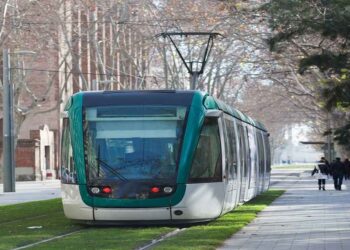Rainbow Warrior III was custom built for environmental activist group Greenpeace International. Construction of the ship was completed in October 2011.
A $32m (€23m) contract to build the ship was awarded to Fassmer Shipyard, Germany, in July 2009. Funds for Rainbow Warrior III’s construction were sourced from about three million sponsors. The 57.92m-long ship uses wind energy instead of fossil fuels and incorporates green marine technology.
Greenpeace uses Rainbow Warrior III in its environmental awareness campaigns. The ship provides a functional platform for campaigns at sea and in harbours. It can be deployed on campaign operations worldwide in all climatic zones and used for conducting research activities.
The ship has the capacity to carry and launch inflatable boats in tough weather conditions. It also has a helicopter landing facility. The oceanic vessel is equipped with the latest in electronic navigation, sailing and communications equipment.
The ship was built to meet strict environmental demands and as a result the heat generated from the engine is recycled to heat the cabins and the used water is treated and purified by a biological system.
Details of Greenpeace’s first purpose-built ship
Rainbow Warrior III is Greenpeace’s first purpose-built ship. Her predecessors, Rainbow Warrior and Rainbow Warrior II, were conversion ships.
Built in 1955, Rainbow Warrior was a trawler originally named Sir William Hardy, which served the Ministry of Agriculture, Fisheries and Food until 1977.
Greenpeace International relaunched the ship as Rainbow Warrior in 1978 after acquiring the vessel for £40,000. The ship was used to protest against numerous activities such as nuclear weapons testing, seal hunting and whaling.
During a mission in 1985, the ship was sunk by the French intelligence service while in harbour in New Zealand. Rainbow Warrior II was rebuilt in 1989 on the fourth anniversary of the sinking of her predecessor.
Rainbow II is 52 years old and has completed two decades of campaigning and navigation across the world. The ship was replaced by Rainbow Warrior III as it was found unfeasible to upgrade Rainbow Warrior II to meet Greenpeace’s future global campaign challenges.
Design by naval architects Gerard Dijkstra & Partners
Designed by Amsterdam-based naval architects Gerard Dijkstra & Partners, the ship is of the same green colour as its predecessors. A life-cycle analysis was undertaken by a research company TNO on behalf of the architects. An optimised eco-design and sustainability report of the Rainbow Warrior III was then produced.
The superstructure and spars are made of aluminium while the hull is made from steel. The ship’s mast has A-frame masts for sails. The sails are made semi-automatic so that rigging-in and rigging-out becomes easier. The hull maximises fuel conservation. The ship has a fuel capacity of 110,000l, fresh water capacity of 32,000l and an electric drive system (10kt on only 300kW). It has 30 berths.
Rainbow Warrior III also includes biological sewage treatment and a central filling and venting system to prevent spillage within. Water heating onboard is carried out with heat created by the engine generators.
Engine of the environmental group’s vessel
Rainbow Warrior III is a sailing ship mostly dependent on wind energy. It, however, has a back-up engine – Volvo Penta D65A MT 1850 HP – that runs on diesel-electric propulsion. The back-up engine is used during bad weather conditions and has a speed of up to 11kt.
Ship propulsion
The ship, running on the back-up engine, moves at a maximum speed of 11kt. Power from the diesel-electric engine reaches the propellers through an electromotor. The ship’s speed can be increased by connecting the main engine, which can elicit a maximum speed of 16kt. The main engine powers the propellers mechanically. However, this increases the emission levels.
Missions involving Greenpeace’s Rainbow Warrior III
Outfitted with advanced communication and electronic navigations systems, the Rainbow Warrior ships have been active participants in many environmental campaigns.
In 1985, the ship relocated the South Pacific Island’s population – the evacuation transported 300 islanders and more than 100t of building materials in ten days.
In 2004, the ship provided relief to disaster victims of the tsunami in South East Asia. Rainbow Warrior campaigned against the French Government’s nuclear testing from 9 June 1995 until 20 March 1996.
































